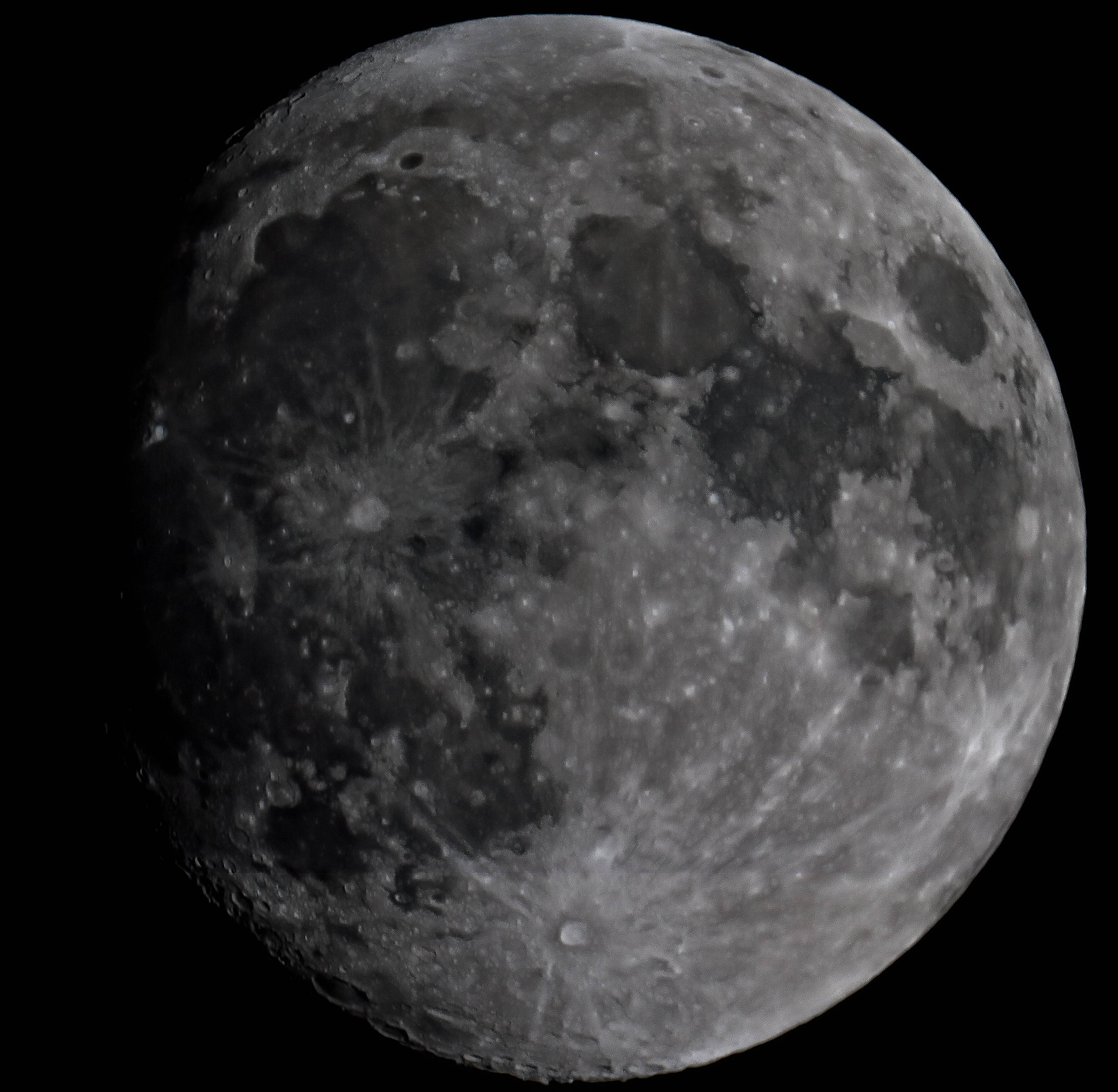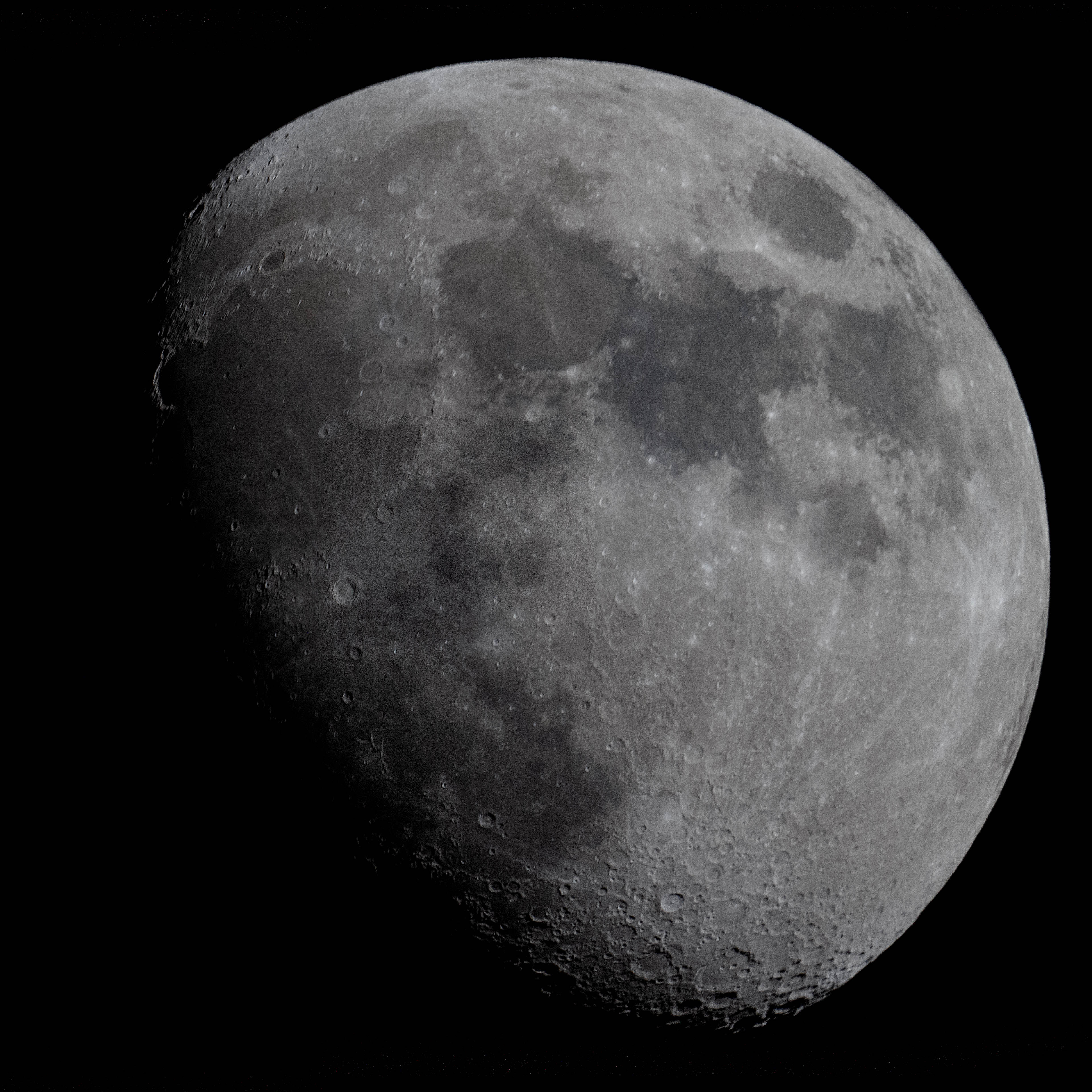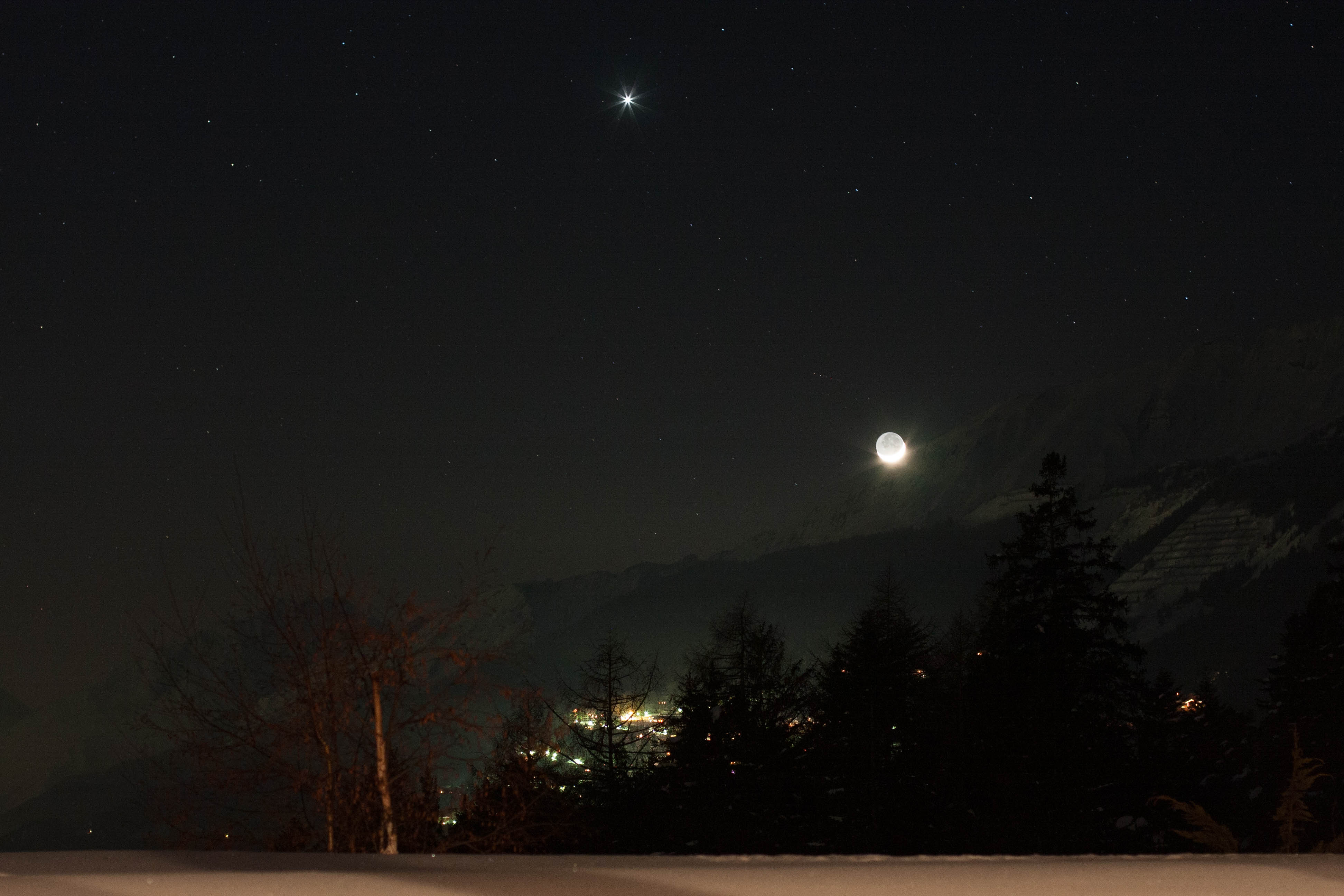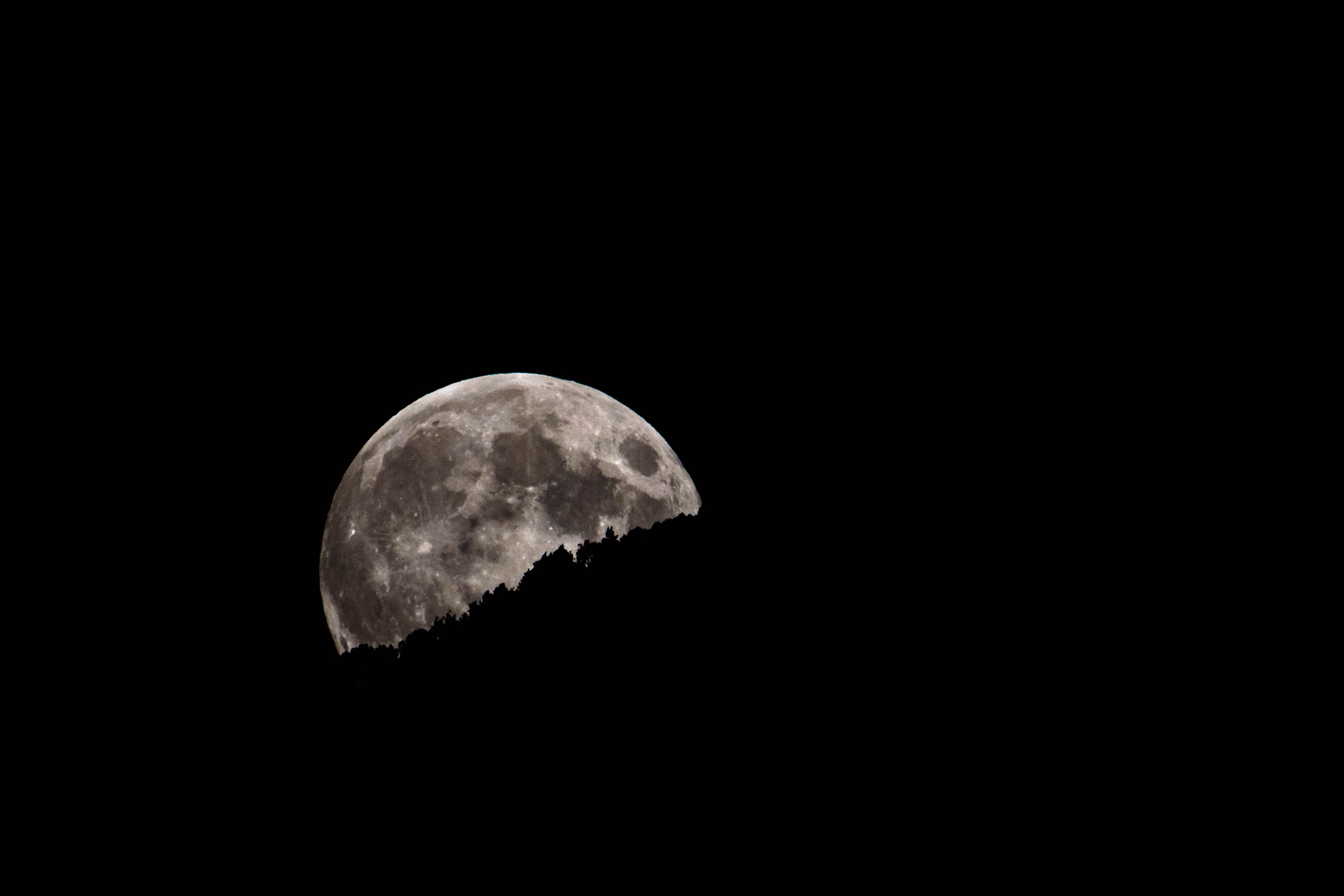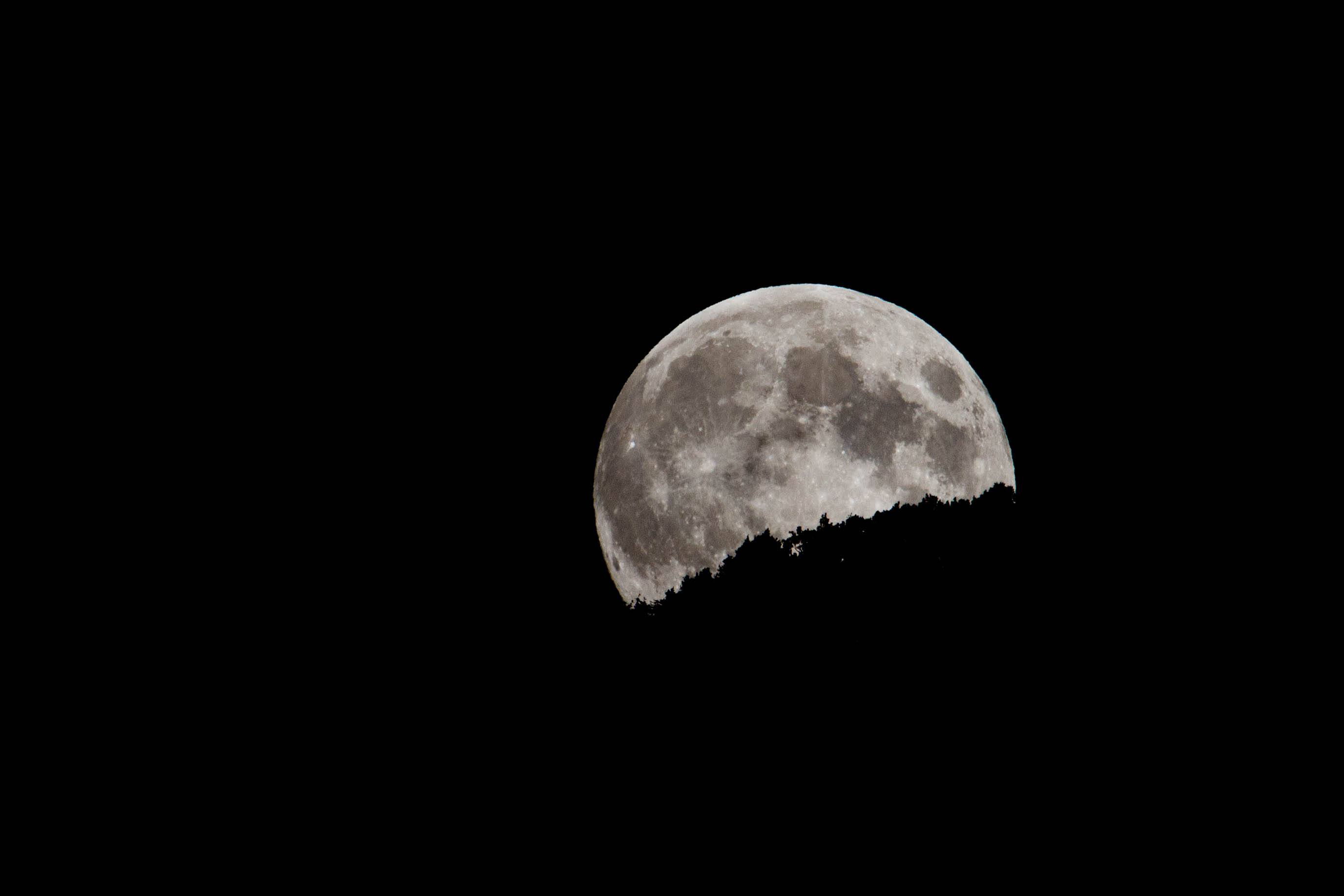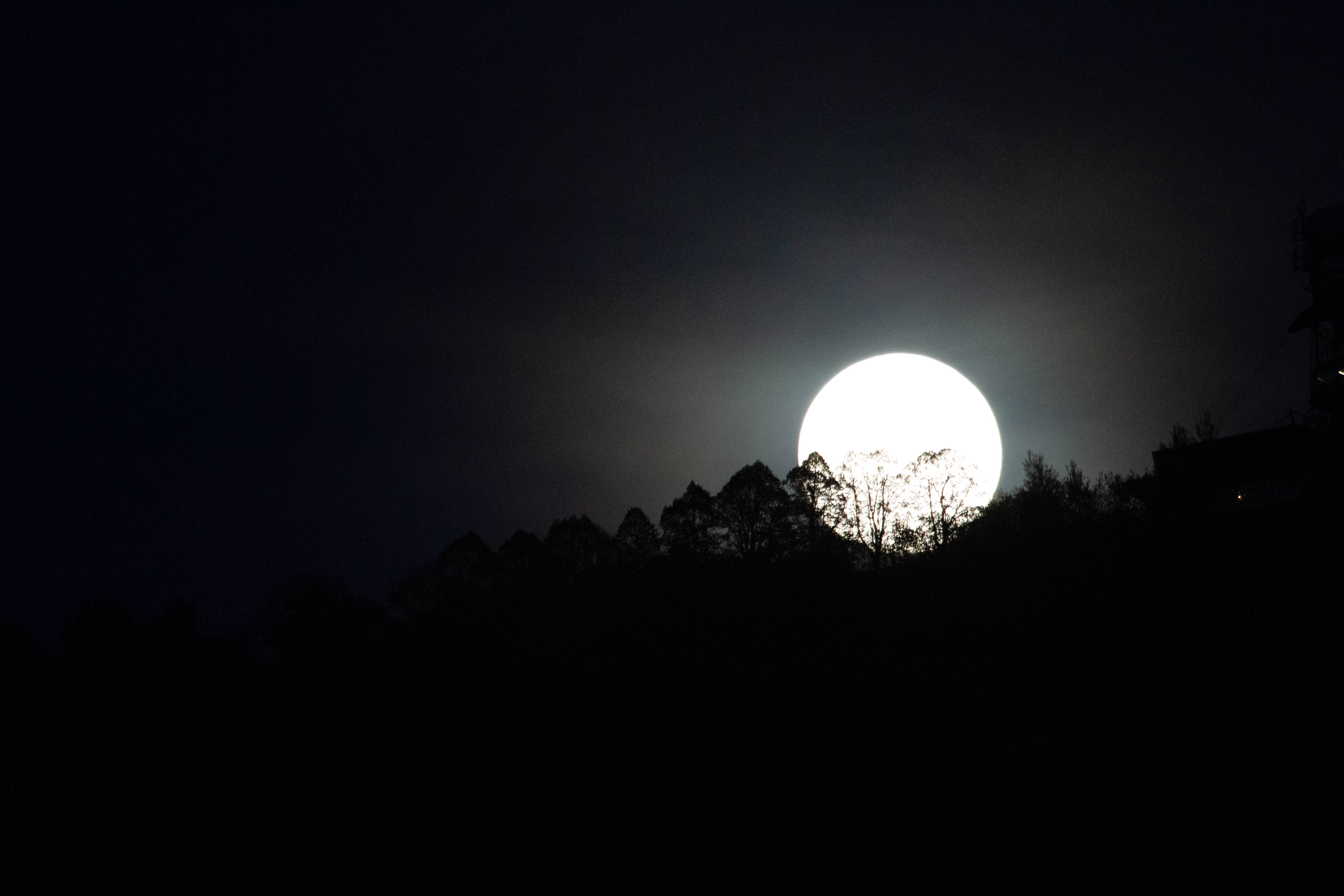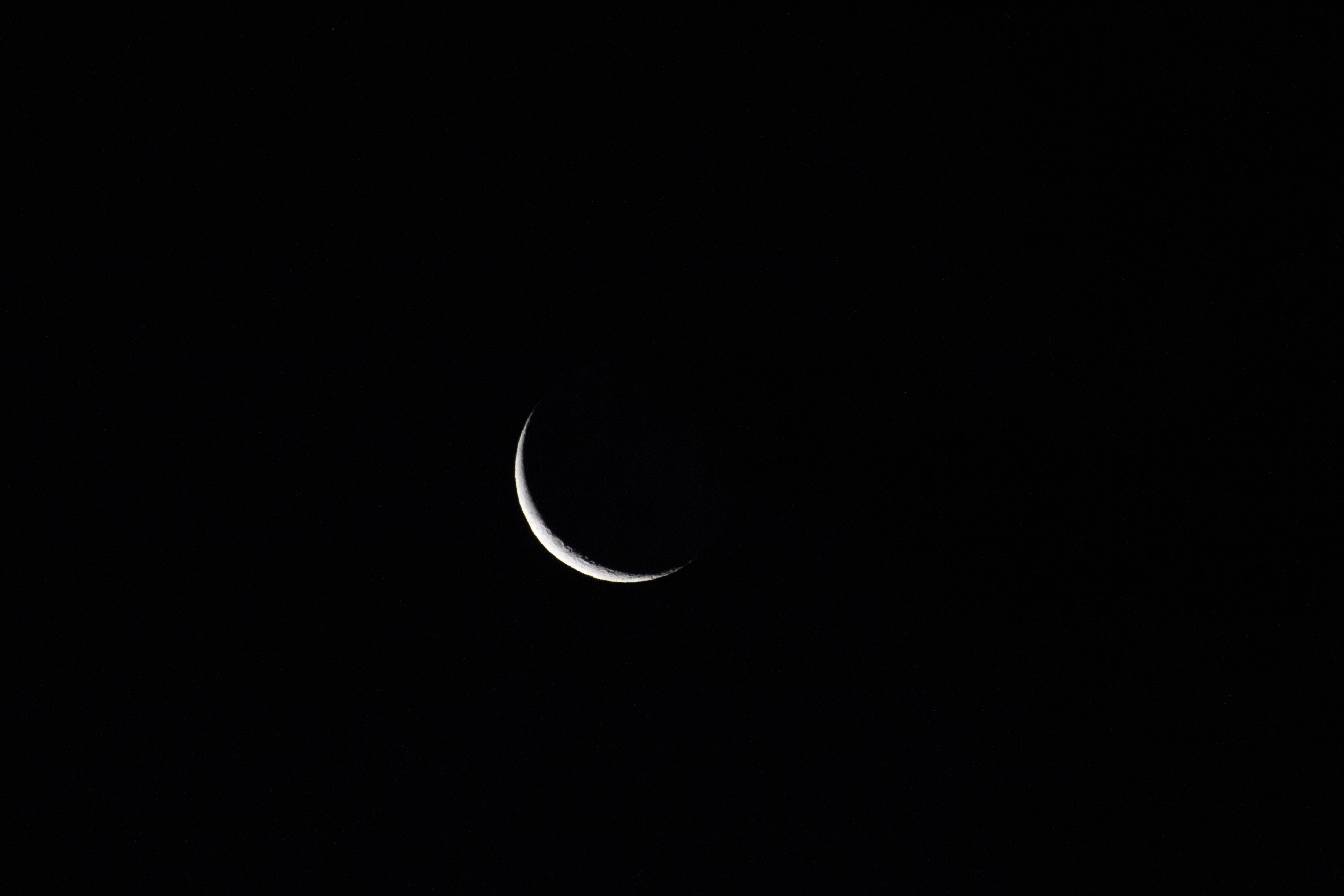Introduction
The Moon is Earth’s only permanent natural satellite. Visible to the naked eye, it marks the rhythm of the nights, influences tides, and has inspired myths, calendars, and space missions. It is a major subject of astronomical study.
Physical characteristics
- Diameter: 3,474 km (about one-fourth of Earth’s)
- Average distance from Earth: 384,400 km
- Gravity: about 1/6 that of Earth
- Orbital period: ~27.3 days (sidereal revolution)
- Synchronous rotation: the Moon always shows the same face to Earth
Its surface is marked by:
- Lunar maria (dark basaltic plains),
- Impact craters,
- Mountain chains and valleys.
Origin
The most accepted theory is that of the giant impact: a Mars-sized body named Theia collided with Earth shortly after its formation. The resulting debris coalesced to form the Moon.
Lunar phases
The Moon doesn’t emit light — it reflects sunlight. Its relative position with Earth and the Sun creates the cycle of lunar phases:
- New Moon
- First Quarter
- Full Moon
- Last Quarter
This cycle lasts about 29.5 days (synodic month).
Influence on Earth
The Moon’s gravity causes ocean tides. It also stabilizes Earth’s axial tilt, which plays a role in long-term climate stability. Without the Moon, Earth would likely have an unstable tilt.
Exploration
Ancient observations
- Ancient civilizations: lunar calendar tracking
- First sketches by Galileo using a telescope (1609)
Modern exploration
- 1959: Luna 2 (USSR) reached the Moon
- 1969: Apollo 11 (USA) — first human steps (Neil Armstrong and Buzz Aldrin)
- 6 Apollo missions allowed 12 men to walk on the Moon from 1969 to 1972
Future projects
- Artemis program (NASA): return of astronauts planned for 2026–2027
- Goals: lunar base, preparation for Mars missions
The far side
The Moon always shows the same face to Earth. Its far side, or “dark side,” was first observed via space probes. It features more craters and fewer maria.
Scientific facts
- The Moon is receding from Earth at 3.8 cm per year.
- It was once closer and larger in the sky.
- Its apparent diameter is nearly equal to the Sun’s, making total eclipses possible.
Conclusion
The Moon, silent companion of our nights, continues to inspire scientific and cultural fascination. From its violent origins to its stabilizing presence and its role in humanity’s space future, it remains a unique link between our planet and the universe.
Lunar Photography
Lunar photography dates back to the early experiments of the 19th century. In 1840, John William Draper captured one of the first images of the Moon. Over time, photographic techniques have evolved to reveal increasingly detailed and precise images of the lunar surface.
The Moon
Canon 7D at prime focus of Intes M703 Maksutov-Cassegrain, October 25, 2015.
Same setup, lunar mosaic.
Lunar mosaic — Canon 7D at prime focus of Intes M703 Maksutov-Cassegrain, May 18, 2024.
Lunar conjunction
This conjunction was observed and photographed in Crans-Montana, Switzerland, on January 29, 2009.
The Moon and the Salève
The Moon rising behind Mont Salève on August 20, 2012.
The Moon rising behind Mont Salève on May 20, 2015.
Crescent Moon
Crescent Moon on December 15, 2013, Veyrier – Switzerland
Links:
- How to photograph the Moon – NASA guide


